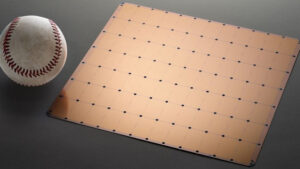The Perfect Pillow: Your Guide to a Restful Night’s Sleep (2000 Words)
Ah, the pillow. An unassuming companion that cradles our heads night after night, playing a crucial role in the quality of our sleep. But with a plethora of options available, from downy clouds to supportive memory foam, choosing the right pillow can feel like navigating a labyrinth. Fear not, weary sleeper! This comprehensive guide will equip you with the knowledge to find your perfect pillow match.
Understanding Your Sleep Style
Before diving into pillow types, understanding your sleep style is paramount. Here’s a breakdown of the three main sleeping positions and their specific needs:
-
Side Sleepers: Majority of the population falls into this category. Side sleepers need a pillow that fills the gap between their head and shoulder, offering ample support and preventing neck strain. A thicker, firmer pillow with good neck cradling is ideal.
-
Back Sleepers: Back sleepers require a pillow that keeps their spine aligned. A medium-firm pillow with moderate loft (height) is perfect for maintaining proper spinal posture.
-
Stomach Sleepers: This position puts the most strain on the neck. Stomach sleepers often benefit from a thin, soft pillow, or even no pillow at all.
Additional Sleep Considerations:
-
Allergies: If you suffer from allergies, consider hypoallergenic materials like down alternatives or shredded memory foam.
-
Temperature Regulation: Hot sleepers might prefer cooling materials like buckwheat or gel-infused memory foam.
-
Medical Conditions: Certain medical conditions like neck pain might necessitate a specific type of pillow, like a cervical pillow designed for ergonomic support.
The Pillow Filling Lowdown:
Now that you understand your sleep style, let’s explore the various pillow fillings and their characteristics:
-
Down: Luxuriously soft and naturally breathable, down pillows offer a cloud-like sleeping experience. However, they can be expensive, require frequent fluffing, and might not be ideal for allergy sufferers.
-
Down Alternative: A synthetic fill that mimics the feel of down at a more affordable price point. Down alternatives tend to be hypoallergenic and easier to care for.
-
Memory Foam: Known for its pressure-relieving properties, memory foam pillows conform to the shape of your head and neck, providing excellent support. However, some memory foam pillows can trap heat. Look for cooling features like gel infusions or ventilated designs.
-
Latex: Offering similar support to memory foam, latex is naturally hypoallergenic and breathable, making it a good choice for hot sleepers and allergy sufferers. Latex pillows can be more expensive than memory foam.
-
Buckwheat: Filled with buckwheat hulls, these pillows offer a unique, firm feel and excellent ventilation. Buckwheat pillows can be noisy when you move around and might take some getting used to.
-
Water: Filled with adjustable water chambers, water pillows allow you to customize the firmness for personalized comfort. However, they can be heavy, require refilling, and might have a wavy feel.
Beyond the Filling: Pillow Construction and Features
The filling isn’t the only factor to consider. Here’s a breakdown of different pillow constructions and features:
-
Pillow Shape: Standard rectangular pillows are the most common, but there are also contoured pillows designed for specific sleeping positions, wedge pillows for better positioning, and body pillows for full-body support.
-
Loft: The height of the pillow. Higher lofts are better for side sleepers, while lower lofts suit back and stomach sleepers.
-
Fabric: The pillowcase material can impact comfort and temperature regulation. Breathable fabrics like cotton or Tencel are ideal.
-
Washability: Check the care instructions to ensure the pillow can be easily washed and dried to maintain hygiene.
Finding Your Perfect Pillow Match:
With the knowledge you’ve gained, here are some tips for choosing the right pillow:
-
Try before you buy: If possible, visit a store and test different pillows. Lie down in your preferred sleeping position to assess comfort and support.
-
Consider online reviews: Research online reviews from reputable sources to get insights from other sleepers.
-
Read return policies: Many online retailers offer generous return policies, allowing you to try the pillow at home with peace of mind.
-
Don’t be afraid to adjust: Some pillows, like shredded memory foam or adjustable fill pillows, allow you to modify the firmness for a personalized fit.
Maintaining Your Pillow for Optimal Sleep
Pillows don’t last forever. Here’s how to keep yours in top shape:
-
Wash regularly: Follow the care instructions for your specific pillow. Generally, washing pillows every 2-3 months is recommended.
-
Fluff and air out: Regularly fluff your pillow to maintain its shape and air it out to prevent moisture build-up.











